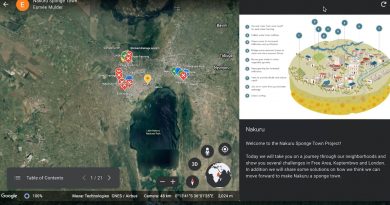WOPs in times of Corona in the LAC region
In Siguatepeque, Honduras, the need for improving water source management is urgent. Due to climate change, shifts on land use, and the complexity of water governance in the area, water operators suffer from a high deterioration of their water sources that results in challenges related to continuity of supply and water quality.
On top of these adversities, the COVID-19 crisis poses another great challenge to water operators. But peers are adapting and are finding ways to start or resume partnerships from a distance to tackle the common needs. This is the case of Aguas de Siguatepeque and EPMAPS-Aguas de Quito (Ecuador), former partners that now restart their collaboration to find a sustainable solution for water management and watershed protection, with the aim of improving the quality and quantity of water supply.
WOP-LAC, the regional WOP platform for Latin America, facilitated an online workshop between mentor and mentee in October 2020 as a two-day follow-up collaboration built off of their initial partnership that took place in 2018. The workshop resulted in tremendous help for the mentee who had decided to focus on one specific area that was not addressed in depth during the 2018 encounter.
“It is clear to me that there is a problem in the management of water sources in Siguatepeque (…) but I am also convinced that the figure of a trust fund for the protection of water is the way to face this problem” Fernando Villalvir, Manager, Aguas de Siguatepeque.

The discussion revolved around the elaboration of a guide for the implementation of a trust fund dedicated to water conservancy in Siguatepeque. The first part of the workshop was focused on the experiences of the mentor EPMAPS in implementing this fund model, key indicators used to ensure success, and the sustainability and effectiveness of these practices and ongoing fund operations.
The mentor explained the fund’s effectiveness in helping to secure the provision of sufficient, good quality water over the short and long run, and the cost-efficiency of watersheds conservation in relation to investment in new infrastructure.
This experience has inspired the establishment of several similar funds in the region, following the model in Quito. The fund is constituted by stakeholders of the public, private and non-governmental sectors. The main capital contributor is EPMAPS through a tariff charged to water users; the capital raised by the fund is in turn invested in the private sector, and all revenues are re-invested in water conservancy actions.
As a result of the first partnership in 2018, several new measures were implemented by the operator in Siguatepeque to prevent the degradation of water sources and to protect watersheds. Among the most important were: the creation of an inter-institutional dialogue space called Environmental Management Round Table; the implementation of a new environmental protection tariff of 4% on water consumption; the launch of the Department of Water Sources as part of the water operator; and the assignment of financial resources for environmental protection (reforestation, environmental monitoring, among others).
The second part of the workshop was dedicated to technical factors for the implementation of a hydrometeorological network, as well as to key conservation strategies that can be implemented using the trust fund mechanism.
“I think that the problems of water for human consumption from countries and cities of Latin America are very similar; knowledge exchange between peers will always be very fruitful.” Rafael Osorio, 2020.

As a result of this workshop, the mentee Aguas the Siguatepeque will develop an action plan for the creation of a trust fund for water conservancy. This task involves the conciliation and agreement between different institutions and communities. It also involves a synergy between national and local policies to set solid ground rules for the implementation of this strategy, which is expected to result in improvements of performance indicators related to continuity of operations and water quality in a short and long term.









